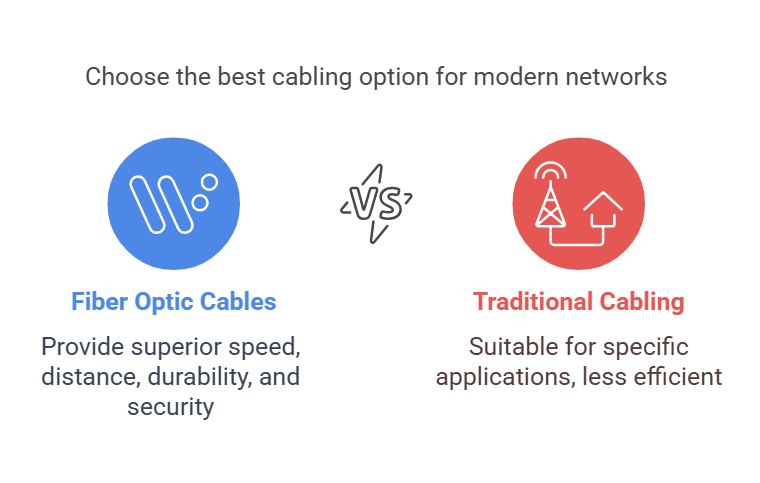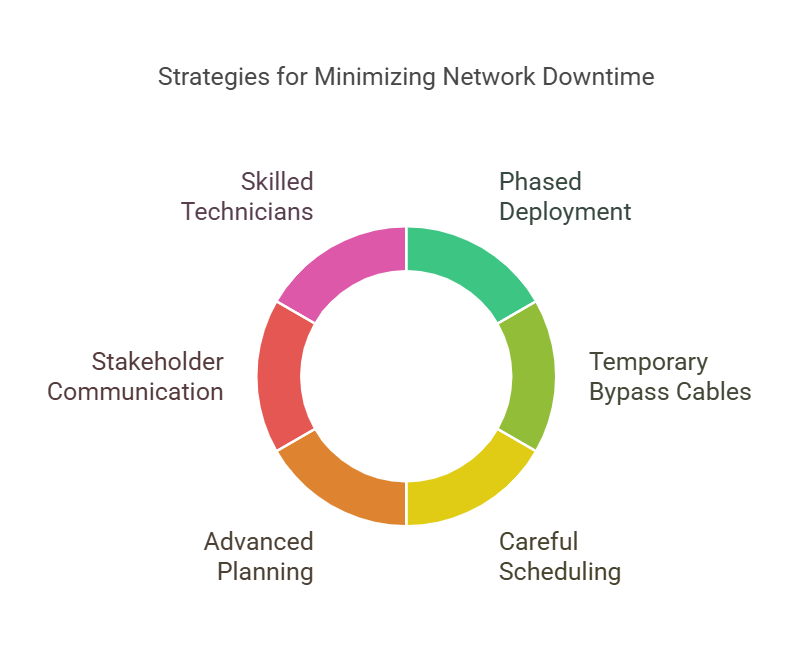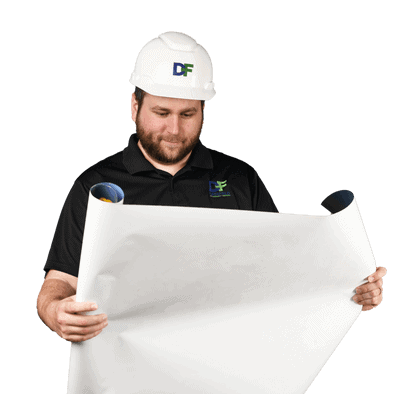Fiber optic cables have transformed data transmission, making them essential for modern telecommunications and OSP networks. Their speed, reliability, and capacity enable high-bandwidth applications, from internet services to advanced communication systems.
Proper installation ensures that these advantages are fully realized. A well-installed fiber optic network delivers efficiency, scalability, and long-term durability, supporting the growing demands of technology and connectivity.
Both aerial and underground installations play a critical role in building robust and future-ready networks. Understanding the methods and challenges involved is key to creating infrastructure that performs reliably and adapts to future needs.
Fiber optic technology has revolutionized the way data is transmitted in OSP networks. These cables use light to transfer information, enabling faster speeds and higher bandwidth compared to traditional cabling systems. They are less prone to electromagnetic interference, ensuring reliable performance even in challenging environments.
Additionally, fiber optic cables offer exceptional scalability. As data demands increase, fiber optics can handle the load without significant upgrades, making them a future-proof solution for OSP networks. Their lightweight design and durability further contribute to their widespread adoption, supporting high-performance connectivity for both urban and remote installations.
When compared to traditional copper or coaxial cables, fiber optic cables stand out for their superior efficiency and reliability. Key advantages include:
While copper and coaxial cables may still be used for certain applications, fiber optics are the backbone of modern OSP networks, delivering unmatched performance and reliability.

Aerial fiber optic cable installation involves mounting cables on existing or newly installed poles. This method is often chosen for its cost-effectiveness and speed, especially in areas with existing utility infrastructure. Specialized equipment, such as cable rollers and tensioners, ensures proper handling and alignment of the cables during installation.
Aerial installations are ideal for urban or suburban areas where poles are readily available. However, they are more exposed to environmental factors like wind, ice, and storms, requiring regular maintenance to ensure long-term reliability.
Underground installation provides greater protection for fiber optic cables by placing them beneath the surface. Common methods include:
While underground installations protect cables from weather and physical damage, they are more labor-intensive and costly. Environmental factors, such as soil conditions and water tables, must be carefully evaluated to prevent long-term issues.
Direct burial involves placing fiber optic cables directly into the ground, often encased in a protective sheath. This method is cost-effective and quicker to deploy but provides limited flexibility for future upgrades or repairs.
In contrast, conduit installation involves threading cables through protective conduits, which act as a barrier against moisture, pests, and physical damage. Conduit systems are more durable and make it easier to replace or upgrade cables without extensive excavation.
Choosing between direct burial and conduit systems depends on the project’s requirements, budget, and environmental conditions. Conduits are preferred for areas prone to damage or requiring future scalability, while direct burial suits simpler installations with fewer risks.
Installing fiber optic cables often involves navigating challenging environmental and terrain conditions. Rocky or uneven landscapes can make trenching and boring difficult, requiring advanced equipment and skilled operators to manage the complexities. Urban environments add another layer of difficulty, as installers must work around existing infrastructure like utilities, roads, and buildings.
Weather conditions, such as heavy rain, extreme heat, or freezing temperatures, can also impact the installation process. Proper planning and selecting the right materials, like weather-resistant cables, are essential to ensure the project remains on schedule and the infrastructure remains durable.
Compliance with local regulations is a critical aspect of fiber optic installation. Obtaining permits and adhering to zoning laws, environmental standards, and right-of-way agreements are non-negotiable steps in the process.
Easements, which grant access to private or public land for cable placement, require careful negotiation and legal documentation. Failing to address these requirements can result in costly delays, fines, or even the need to reroute the project entirely. Working with experienced professionals familiar with local regulations helps streamline the approval process and avoid legal complications.
Maintaining network uptime during fiber optic installation is a top priority, especially in areas where existing networks are in use. Strategies to minimize downtime include:
Advanced planning, communication with stakeholders, and the use of skilled technicians ensure the installation is completed efficiently while minimizing disruptions to services.

DataField is your trusted partner for professional fiber optic installation, offering unmatched expertise, proven results, and a commitment to delivering optimized network solutions. Here’s why we stand out:
Our professional installation services maximize network performance, enabling faster data transmission, higher bandwidth, and minimal signal degradation. This ensures your OSP network can handle the demands of modern communication systems with ease.
With DataField, you gain a durable and resilient fiber optic infrastructure. We use industry-best practices to ensure cables are securely installed, minimizing vulnerabilities and reducing the risk of costly maintenance or repairs.
Our expert planning ensures your fiber optic network is ready for future growth. Whether it’s supporting advancements in technology or increased user demand, DataField delivers scalable solutions that provide long-term value.
With years of experience and a skilled team, DataField specializes in tailored OSP fiber optic installations. Whether your project involves aerial, underground, or hybrid installations, we deliver efficient and reliable results that meet your infrastructure’s unique needs.
DataField has a proven track record of successful fiber optic installations across various industries. Our case studies showcase enhanced network performance, reduced downtime, and long-term infrastructure reliability, providing a clear picture of the benefits our clients have experienced.
